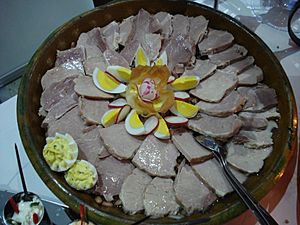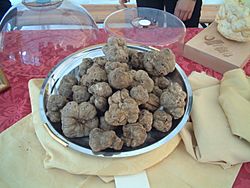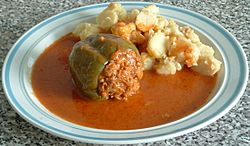Croatian cuisine facts for kids
Croatian food is super diverse, like a big mix of flavors from different parts of the country! Each region in Croatia has its own special way of cooking, and these traditions go way back in time.
You'll notice big differences between the food on the mainland and the food along the coast. Mainland cooking often uses lard (a type of fat) and spices like black pepper, paprika, and garlic. This style was influenced by older Slavic traditions and later by Hungarian and Turkish cuisine flavors.
Along the coast, people use olive oil and lots of fresh herbs like rosemary, sage, bay leaf, and oregano. This cooking style has been shaped by Greek, Roman, and Mediterranean cuisine influences, especially from Italy (Venice, to be exact!).
No matter where you are in Croatia, you'll find delicious cured meats! Also, many popular dishes come from other countries that used to be part of Yugoslavia.
Croatian food can be divided into many regional styles, like those from Dalmatia, Istria, and Slavonija. Each has unique cooking traditions. But don't worry, you can find many popular dishes all over Croatia, often with small local twists!
Contents
- Meat Dishes: What's Cooking?
- Seafood: From the Adriatic Sea
- Hearty Stews
- Pasta and More
- Soups: A Warm Welcome
- Side Dishes: What to Serve With Your Meal
- Other Delicious Croatian Foods
- Sausages and Ham: Cured Meats
- Cheese (sir): A Dairy Delight
- Savoury Pies: Delicious Fillings
- Pastry: Sweet and Savoury Baked Goods
- Sweets and Desserts: A Sweet Ending
- Cakes (kolači): Special Treats
- Drinks: Quench Your Thirst
- See also
Meat Dishes: What's Cooking?
Croatian chefs have many ways to prepare meat. Here are some common cooking styles:
- S roštilja: This means grilled dishes, cooked over an open flame.
- S ražnja: Meat roasted on a spit, turning slowly over heat.
- Pečeno: Simply means roasted.
- Prženo: Means fried.
- Pod pekom: This is a special way of cooking in a stone oven under a metal lid. Hot coals are placed on the lid, so the food cooks slowly in its own juices. Lamb, veal, and octopus are often cooked this way.
- Na lešo: Boiled in broth or water, often used for lamb, beef, or fish.
Here are some tasty Croatian meat dishes:
- Pork: A very popular meat.
- Miješano meso or Ražnjići: Mixed grilled meats or meat skewers.
- Zagrebački odrezak: A Veal steak stuffed with ham and cheese, then breaded and fried. It's like a Croatian cordon bleu!
- Šnicle: Breaded cutlets of veal, pork, or chicken.
- Meso z tiblice: Special pork from a wooden barrel, popular in Međimurje County.
- Janjetina: Roasted lamb, often seasoned with Mediterranean herbs.
- Odojak: Roasted suckling pig.
- Turkey with mlinci: Turkey served with flat pasta that soaks up the roast juices.
- Buncek: Smoked pork hock, often used in bean or sauerkraut stews.
- Krvavice or čurke: These are blood sausages, usually made with blood and kaša (a type of grain).
- Hladetina: A unique type of head cheese.
Seafood: From the Adriatic Sea
Croatia's coast means lots of fresh and delicious seafood!

- Squid (lignje): You can find it grilled, fried, stuffed, or in a stew served with polenta.
- Octopus salad (salata od hobotnice): A refreshing salad. Octopus can also be cooked in a stew or baked pod pekom.
- Cuttlefish risotto (Crni rižot): A black risotto made with cuttlefish ink – it looks unusual but tastes great!
- Tuna: A popular fish, often grilled.
- Scampi (škampi): A type of small lobster.
- Fish stew (brodet or brudet): A flavorful fish stew, especially popular in Dubrovnik and Dalmatia. It's best made with several types of fish.
- Grilled sardines (na gradele): Simple, fresh, and delicious grilled fish.
- Salted anchovies or sardines (slana riba): Served as appetizers or a light meal.
- Buzara: Shellfish cooked with garlic, olive oil, parsley, and white wine.
Hearty Stews
Stews are a big part of Croatian cooking, often seen as healthy and traditional meals. They usually have vegetables with a little meat or sausage. On the coast, people might add olive oil, while in northern Croatia, sour cream is a common addition.
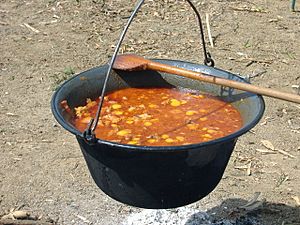
- Goulash (gulaš): A rich meat stew, similar to the famous Hungarian dish.
- Grah: A bean stew, often made with pork hock. Sometimes it's cooked with sauerkraut or pickled turnip strings.
- Riblji paprikaš or fiš-paprikaš: A spicy fish stew from Slavonia.
- Brudet or Brodet: Another type of fish stew.
- Jota: A tasty stew from Istria.
- Pašta fažol: A bean stew with small pasta.
- Game Čobanac (Shepherd's Stew): A hearty stew, often made with game meat.
- Pašticada: A special Dalmatian beef stew, often made with prunes and dried figs.
- Tripe stew (tripice, fileki): A stew made from animal stomach.
Pasta and More
Pasta is very popular in Croatian food, especially in Dalmatia.
- Manistra na pome: Pasta with tomato sauce, a simple favorite.
- Other popular sauces include creamy mushroom sauce or minced meat sauce.
- Fresh pasta (rezanci, krpice) is often added to soups or stews.
- It can also be served with cottage cheese, cabbage, walnuts, or poppy seeds.
- Potato dough is used for njoki (gnocchi) and also for delicious plum or cheese dumplings. These dumplings are boiled, then quickly fried in breadcrumbs and butter.
Here are some specific pasta dishes:
- Žganci: A cornmeal dish, also known as polenta in Istria and Dalmatia.
- Gnocchi: Often served with stews like pašticada or goulash.
- Fuži: A unique pasta shape from Istria.
- Štrukli: Baked or cooked pastry filled with cheese, from the Zagorje region near Zagreb.
- Krpice sa zeljem: Pasta with stewed cabbage.
- Šporki makaruli: A traditional pasta dish from Dubrovnik with a cinnamon-flavored meat sauce.
-
Mlinci are a type of flatbread.
-
Zagorski štrukli are a delicious filled pastry.
Soups: A Warm Welcome
Soup is a must-have at most Croatian meals, especially on Sundays or for special occasions. Most soups are light, broth-based, with pasta or semolina dumplings. This leaves room for the main course and dessert! Creamy soups are also popular, and each region has its own twist on traditional recipes. In Dalmatia, fish soup with chunks of fish, carrots, and rice is a common choice.
Some popular Croatian soups include:
- Maneštra: A vegetable soup.
- Beef broth with vermicelli pasta: A classic, comforting soup.
- Mushroom soup: Especially with porcini mushrooms.
- Chicken soup: A popular choice for many.
Side Dishes: What to Serve With Your Meal
- Sataraš: Sliced and stewed summer vegetables.
- Mlinci: A typical flatbread from northwest Croatia, often served with roasted meats.
- Đuveč: Baked summer vegetables, similar to Ratatouille.
Other Delicious Croatian Foods
- Punjena paprika: Peppers filled with minced meat, similar to Turkish dolma.
- Sarma: Rolls of Sauerkraut leaves filled with minced pork and rice.
- Wild truffles: Found in Istria, often served with pasta, risotto, or fried eggs.
- Croatian olive oil: A key ingredient, especially on the coast.
- Paški baškotin: A special aromatic toasted bread from the island of Pag.
- Potatoes from Lika: Known for their high quality.
- Sauerkraut from Varaždin: A famous regional product.
- Fritaja with asparagus: A type of omelet with wild asparagus.
- Čvarci: Crispy fried pork rinds, a popular snack.
Sausages and Ham: Cured Meats
Croatia has many delicious cured meats and sausages.
- Kulen: A spicy pork sausage from Slavonia.
- Češnjovka: A spicy pork sausage with a strong garlic flavor from Turopolje.
- Kobasica: A spicy, air-dried or smoked sausage.
- Istrian and Dalmatian Pršut: A famous dry-cured ham.
- Ćevapčići: Grilled minced meat rolls, very popular.
- Panceta: Cured pork belly from Dalmatia.
Cheese (sir): A Dairy Delight
- Paški sir: A very famous sheep's milk cheese from the island of Pag.
- Farmers' cheese (škripavac): A squeaky cheese from the regions of Kordun and Lika.
- Cottage cheese (sir i vrhnje): Often eaten with cream, especially in Zagorje, and seen as a classic Croatian food.
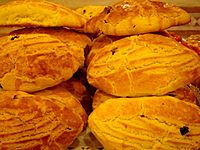
Savoury Pies: Delicious Fillings
- Viška pogača: A type of focaccia bread from the island of Vis, filled with salted sardines.
- Soparnik: A traditional Dalmatian pie filled with chard.
- Duvanjska pita: Made from thin dough wraps filled with potato and meat.
Pastry: Sweet and Savoury Baked Goods
- Pita: A general term for various baked pastries, often with cheese, meat, or fruit fillings.
- Pogača: A type of farmer's bread.
- Povitica: A sweet bread roll with a nut filling.
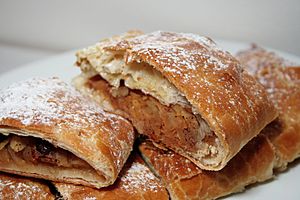
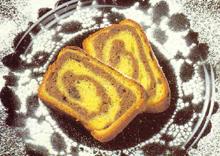

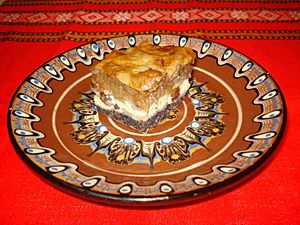
- Bucnica: A pie made with summer squash and cottage cheese, can be savory or sweet.
- Štrukli: Can be savory or sweet, boiled or baked, made with cottage cheese, sour cream, and eggs.
- Zlevanka: A simple baked cornmeal pastry with different fillings like cheese, sour cream, or fruit jam.
Sweets and Desserts: A Sweet Ending
- Palačinke: Thin pancakes (crepes) with sweet fillings like jam, chocolate, or nuts.
- Baklava: A sweet pastry with layers of phyllo dough, nuts, and syrup.
- Kremšnita: A creamy vanilla and custard cake.
- Uštipci: Small fried dough pieces.
- Fritule: Small, deep-fried dough balls, especially popular during holidays like Christmas.
- Knedle: Potato dough dumplings, often filled with plums and rolled in buttered breadcrumbs.
- Strudel (savijača or štrudla): A rolled pastry with apple or cheese fillings.
- Orahnjača and Makovnjača: Sweet breads filled with walnuts or poppy seeds.
- Krafne: A type of doughnut.
- Šnenokli or paradižot: A dessert with meringue (egg whites) floating in custard cream.
- Čupavci: Coconut-covered chocolate sponge cakes.
Cakes (kolači): Special Treats
- Rožata or Rozata: A creamy flan or creme caramel.
- Easter pastry Pinca: A sweet bread often made for Easter.
- Kroštule: Crunchy, deep-fried pastries.
- Rapska torta: A famous cake from the island of Rab.
- Međimurska gibanica: A layered cake from Međimurje County with apple, poppyseed, walnut, and cottage cheese fillings.
- Mađarica: A popular Croatian layer cake.
Drinks: Quench Your Thirst
Wines: From Vineyards to Your Glass
Croatia has two main wine regions: Continental and Coastal (which includes the islands). These regions are further divided into many smaller areas, each with its own special wines. In some parts of Croatia, people mix wine with mineral water, about two-thirds wine to one-third water.
- Sweet Malvazija: A sweet white wine.
- Prošek: A traditional Dalmatian sweet dessert wine.
- Graševina: A popular white wine.
- Plavac Mali: A well-known red wine grape.
Beers (pivo): Local Brews
Besides international beers, Croatia has many local beers.
- Karlovačko: Brewed in Karlovac.
- Ožujsko: Brewed in Zagreb.
- Osječko: From Osijek, this is the oldest brewery in Croatia!
- Velebitsko pivo: Brewed near Gospić, its dark beer is very popular.
Liqueurs and Spirits: Stronger Sips
- Rakija: This is a general name for strong spirits in Croatia. It's often made from:
* Lozovača / Loza: Made from grapes (like Italian Grappa). * Travarica: Loza with added herbs. * Šljivovica: Made from plums. * Kruškovac: Made from pears.
- Pelinkovac: A bitter herbal liqueur.
- Orahovac: A sweet walnut liqueur.
- Medovina: A honey wine.
Coffee: A Daily Ritual
Croatia loves coffee! People drink a lot of it every year. This is partly because of its history with the Austro-Hungarian Empire and the Ottoman Empire. You'll find traditional coffee houses all over Croatia, similar to those in Vienna.
Mineral Water: Pure and Refreshing
Croatia is known for its excellent water resources. The quality of Croatian water is highly valued around the world.
- Jamnica: Won an award for best mineral water in Paris in 2003.
- Jana: Also part of Jamnica, it won an award for best flavored mineral water in 2004.
Juices and Syrups: Fruity Drinks
- Badel
- Jamnica
- Maraska
- Cedevita: A popular instant vitamin drink.
See also
 In Spanish: Gastronomía de Croacia para niños
In Spanish: Gastronomía de Croacia para niños


